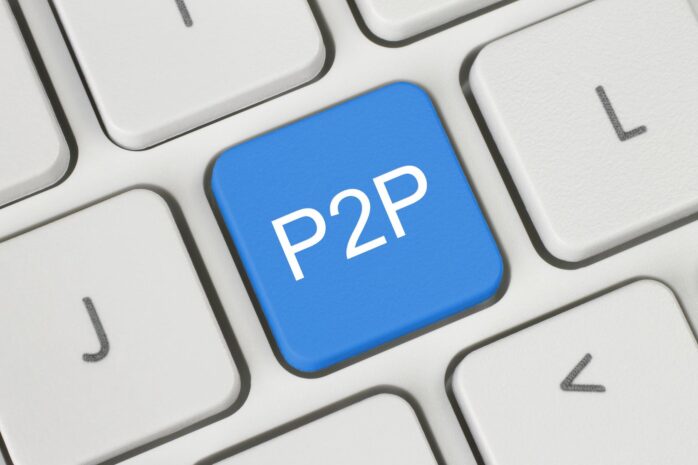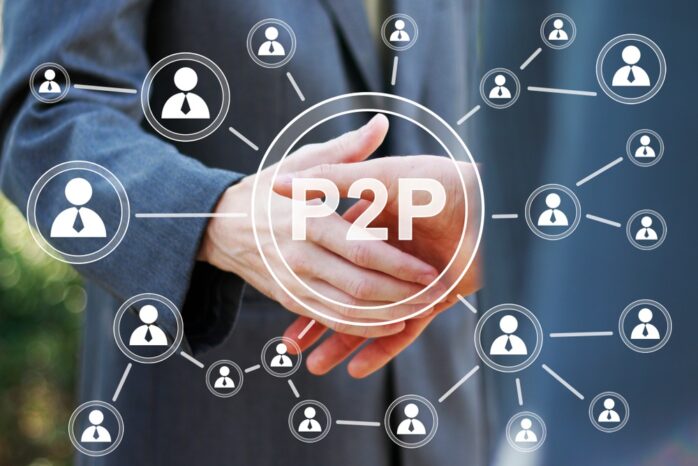Peer-to-peer lending, also known as P2P lending, is a revolutionary financial model that bypasses traditional financial institutions by directly connecting borrowers with individual lenders via online platforms. This decentralized strategy utilizes technology to establish a virtual marketplace where individuals can lend and borrow money without the need for intermediaries such as banks.
P2P lending provides a more inclusive and accessible alternative to traditional lending, as borrowers can obtain loans based on their creditworthiness and personal profiles, and investors can diversify their portfolios by investing in minor loans to multiple individuals.
This democratization of lending not only offers competitive interest rates to borrowers but also enables lenders to receive returns on their investments. As technology continues to transform the financial landscape, peer-to-peer lending is at the vanguard, reshaping how individuals gain access to and invest money. Find the best p2p lending platforms in the UK.
Benefits of peer-to-peer lending

Peer-to-peer (P2P) lending has gained prominence as a dynamic financial model, offering several benefits for both borrowers and lenders. Here are seven key advantages:
1. Accessibility and Inclusivity
P2P lending platforms provide an inclusive financial environment by allowing borrowers who may face challenges obtaining loans through traditional channels to access funding. Individuals with varying credit profiles can connect with a diverse range of investors willing to fund their loans. This democratization of lending ensures that creditworthy borrowers, who might be overlooked by traditional financial institutions, have the opportunity to secure financing.
2. Competitive Interest Rates
P2P lending often results in more competitive interest rates compared to traditional banks. The absence of physical infrastructure reduced overhead costs, and the elimination of intermediaries contributed to lower operational expenses. These savings can be passed on to borrowers in the form of more attractive interest rates. Consequently, borrowers can potentially secure loans with better terms, making P2P lending an appealing option for those seeking cost-effective financing.
3. Diversification for Investors
P2P lending platforms offer investors a unique opportunity to diversify their portfolios. Instead of investing in traditional asset classes like stocks and bonds, investors can allocate funds to a variety of individual loans. This diversification minimizes risk by spreading investments across different borrowers and industries. As a result, investors can potentially earn returns that are less correlated with broader market movements, enhancing the stability and resilience of their investment portfolios.
4. Efficiency and Speed

P2P lending leverages technology to streamline the loan application and approval process. Traditional banking procedures often involve extensive paperwork, numerous manual reviews, and prolonged decision-making timelines. In contrast, P2P lending platforms employ advanced algorithms to assess borrower creditworthiness and automate much of the underwriting process. This not only reduces the time required for loan approval but also enhances overall operational efficiency.
5. Flexible Loan Terms
P2P lending platforms offer borrowers greater flexibility in terms of loan customization. Borrowers can often choose loan amounts, repayment terms, and interest rates based on their individual financial circumstances. This flexibility allows borrowers to tailor loans to their specific needs, providing a level of personalization that may be challenging to find in traditional lending institutions. Additionally, P2P lenders may be more open to negotiating terms, fostering a borrower-friendly environment.
6. Transparency and Information Accessibility
P2P lending platforms prioritize transparency by providing comprehensive information about borrowers and the associated risks. Investors can access detailed profiles of potential borrowers, including their credit history, purpose for the loan, and financial stability. This transparency empowers investors to make informed decisions based on risk assessments. Similarly, borrowers benefit from clear visibility into the terms and conditions of their loans, fostering a sense of trust and openness within the P2P lending ecosystem.
7. Community Building and Social Impact
P2P lending creates a sense of community among participants, as individuals come together to support one another financially. Borrowers often appreciate the human aspect of P2P lending, knowing that their loans are funded by individual investors rather than faceless institutions. This connection can lead to positive social impacts, as borrowers and lenders from diverse backgrounds and locations engage in mutually beneficial financial relationships. Additionally, P2P lending may provide opportunities for socially conscious investing, allowing investors to support causes and individuals aligned with their values.
FAQ

Is peer-to-peer lending illegal?
No, peer-to-peer (P2P) lending is not illegal. In fact, it is a legal and legitimate financial practice that has gained popularity globally. P2P lending operates within the regulatory frameworks of different countries, and numerous platforms comply with legal standards to ensure the protection of both borrowers and lenders. However, regulations can vary, so it’s essential to use reputable platforms and be aware of the legal landscape in your specific location.
Is peer-to-peer lending a good idea?
Yes, peer-to-peer lending can be a good idea for both borrowers and investors. For borrowers, P2P lending offers increased accessibility to loans, often with competitive interest rates and more flexible terms compared to traditional banks. For investors, it provides an opportunity to diversify portfolios and potentially earn attractive returns by lending directly to individuals or small businesses. However, like any financial endeavor, there are risks involved, and individuals should carefully assess their risk tolerance and conduct due diligence before participating in P2P lending.
What is the peer-to-peer lending scheme?
The peer-to-peer lending scheme involves individuals lending and borrowing money directly through online platforms, bypassing traditional financial institutions. Borrowers create profiles on P2P lending platforms, and investors can choose to fund portions of their loans. The lending platform facilitates the process, including credit assessments, repayment structures, and collections. It’s essentially a decentralized financial model that leverages technology to connect borrowers and lenders in a more direct and efficient manner, offering benefits such as competitive interest rates, transparency, and flexibility.
Is P2P Legal in the UK?

Yes, peer-to-peer lending is legal in the UK. The Financial Conduct Authority (FCA) regulates P2P lending platforms to ensure that they adhere to certain standards and protect the interests of both borrowers and lenders. The regulatory framework sets guidelines for conduct, transparency, and risk management. As a result, individuals can confidently engage in P2P lending activities in the UK, enjoying the benefits of this alternative financial model within the bounds of established regulations.
Conclusion
Peer-to-peer lending has emerged as a legitimate and innovative financial solution, making borrowing and investing more accessible and efficient. Although it is legal and offers numerous benefits, individuals must exercise caution, conduct exhaustive research, and remain informed of applicable regulations.
The transparency, adaptability, and community-building aspects of peer-to-peer lending make it an attractive option for those seeking alternative financial options. As the industry continues to evolve, the key rests in participating responsibly, adhering to regulatory guidelines, and capitalizing on the opportunities presented by this dynamic and inclusive form of lending.



















